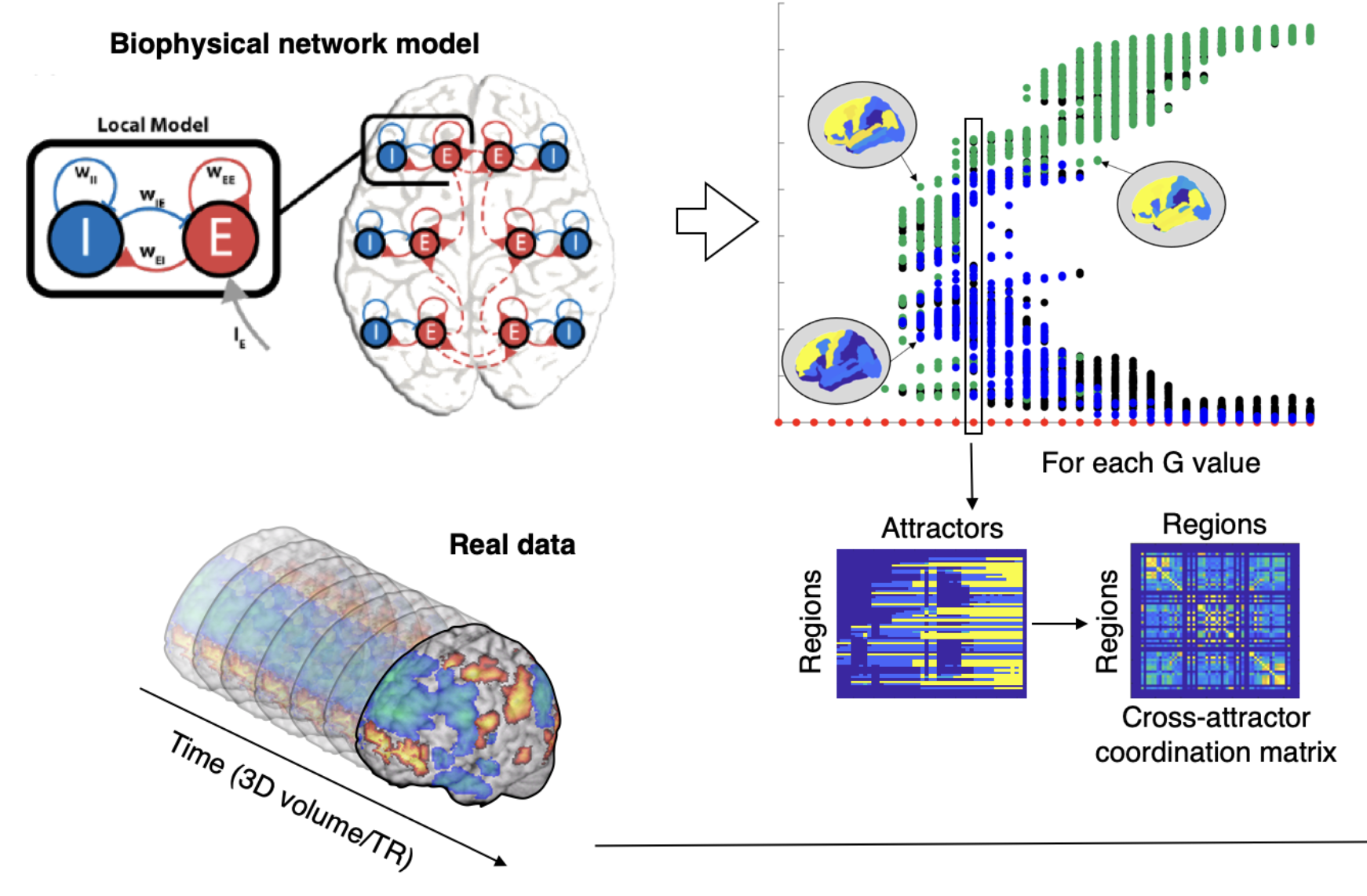Abstract
Resting-state functional connectivity (RSFC) is altered across various psychiatric disorders. Brain network modeling (BNM) has the potential to reveal the neurobiological underpinnings of such abnormalities by dynamically modeling the structure-function relationship and examining biologically relevant parameters after fitting the models with real data. Although innovative BNM approaches have been developed, two main issues need to be further addressed. First, previous BNM approaches are largely limited to simulating noise-driven dynamics near a chosen attractor (or a stable brain state). An alternative approach is to examine multi(or cross)- attractor dynamics, which can be used to better capture non-stationarity and switching between states in the resting brain. Second, previous BNM work is limited to characterizing one disorder at a time. Given the large degree of co-morbidity across psychiatric disorders, comparing BNMs across disorders might provide a novel avenue to generate insights regarding the dynamical features that are common across (vs. specific to) disorders. Here, we address these issues by (1) examining the layout of the attractor repertoire over the entire multi-attractor landscape using a recently developed cross-attractor BNM approach; and (2) characterizing and comparing multiple disorders (schizophrenia, bipolar, and ADHD) with healthy controls using an openly available and moderately large multimodal dataset from the UCLA Consortium for Neuropsychiatric Phenomics. Both global and local differences were observed across disorders. Specifically, the global coupling between regions was significantly decreased in schizophrenia patients relative to healthy controls. At the same time, the ratio between local excitation and inhibition was significantly higher in the schizophrenia group than in the ADHD group. In line with these results, the schizophrenia group had the lowest switching costs (energy gaps) across groups for several networks, including the default mode network. The paired comparison also showed that patients with schizophrenia had significantly lower energy gaps than healthy controls for the somatomotor and visual networks. Overall, this study provides preliminary evidence supporting transdiagnostic multi-attractor BNM approaches to better understand psychiatric disorders’ pathophysiology.
